Home > Directory of Drawing Lesson > Human Face and Body > Drawing the Human Body in Proportion and Correct Measurements
Drawing the Human Head , Face, and Body in the Correct Proportions
|
[The above words are pictures of text, below is the actual text if you need to copy a paragraph or two]
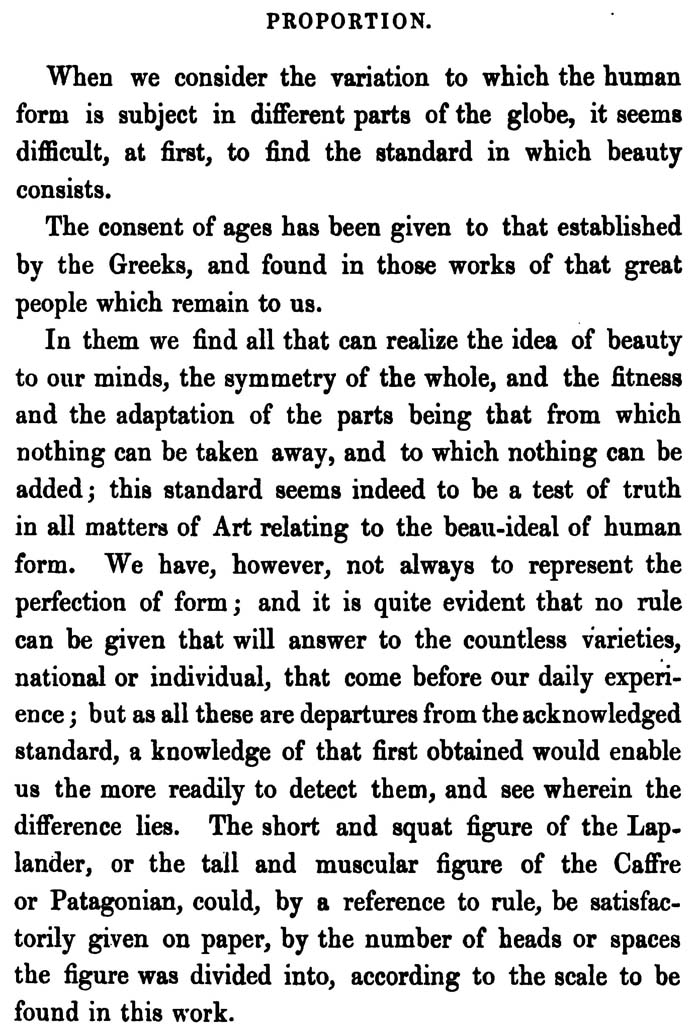
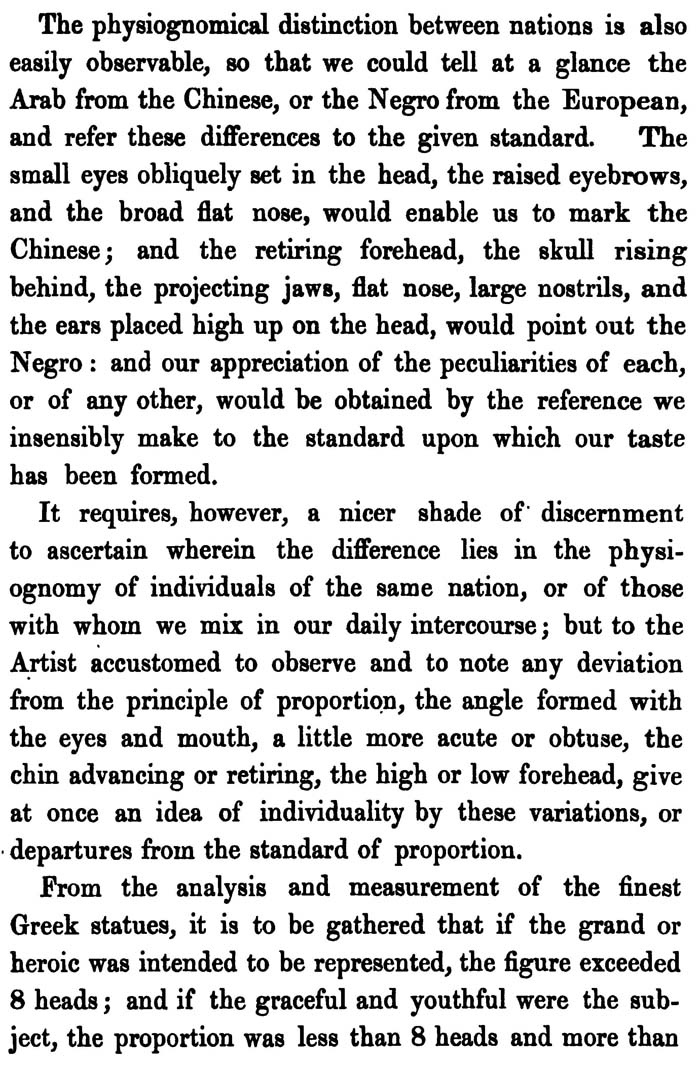
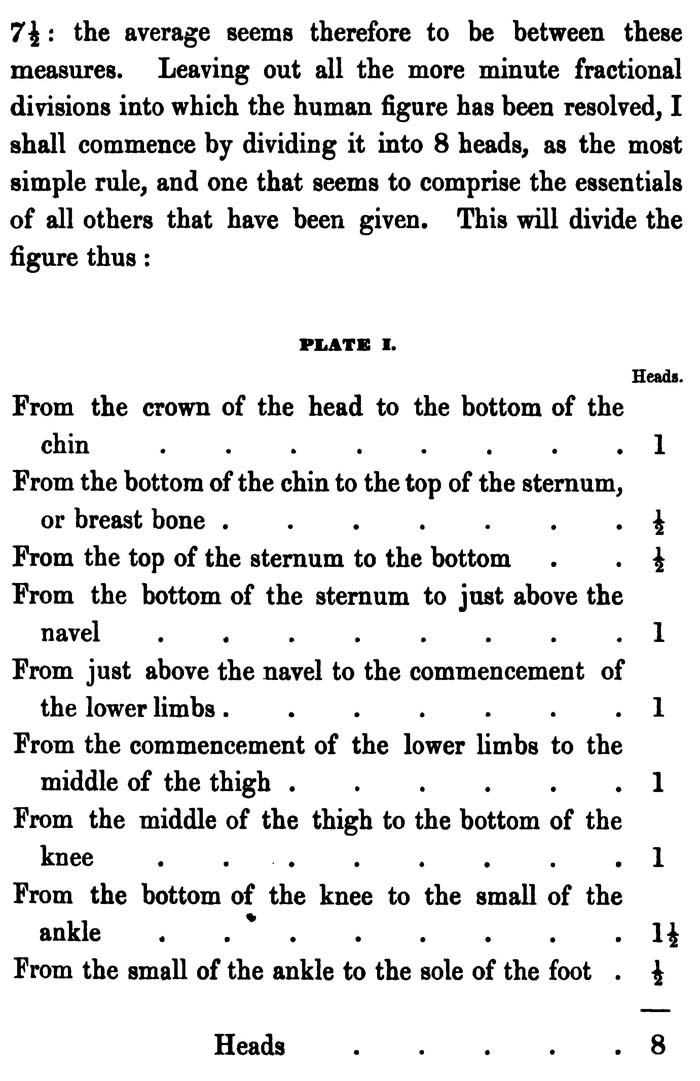
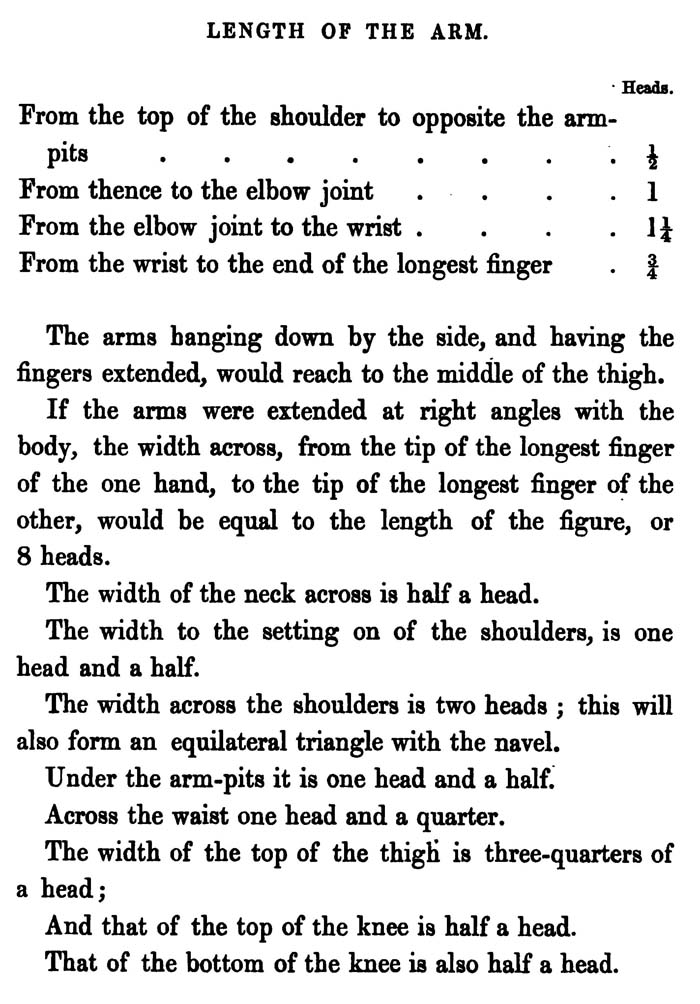

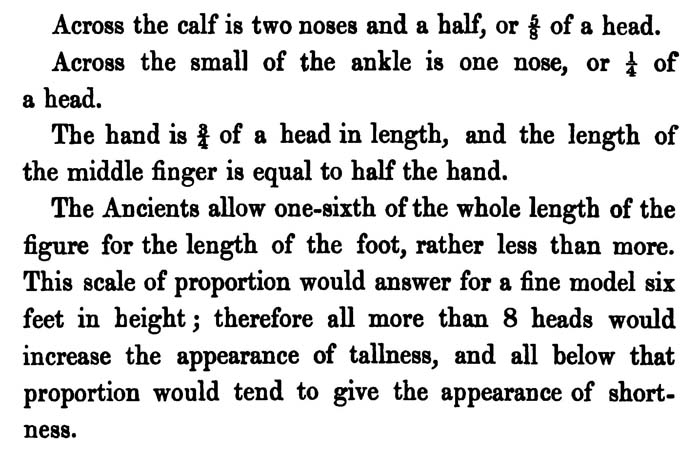
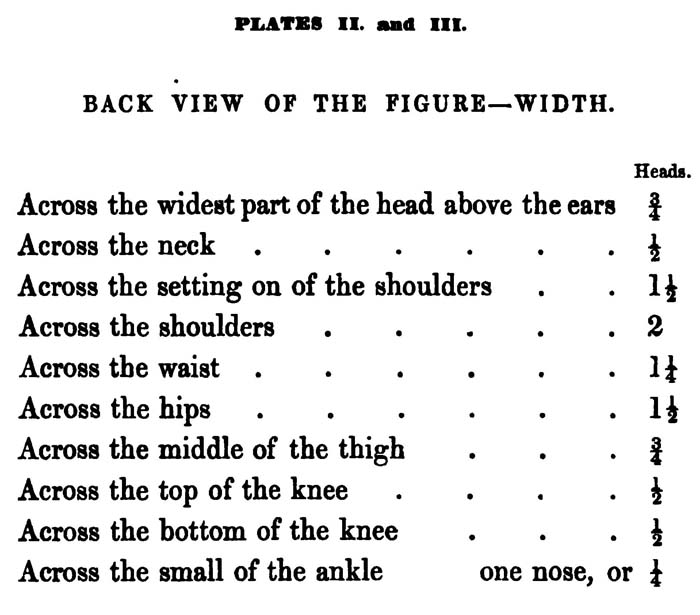

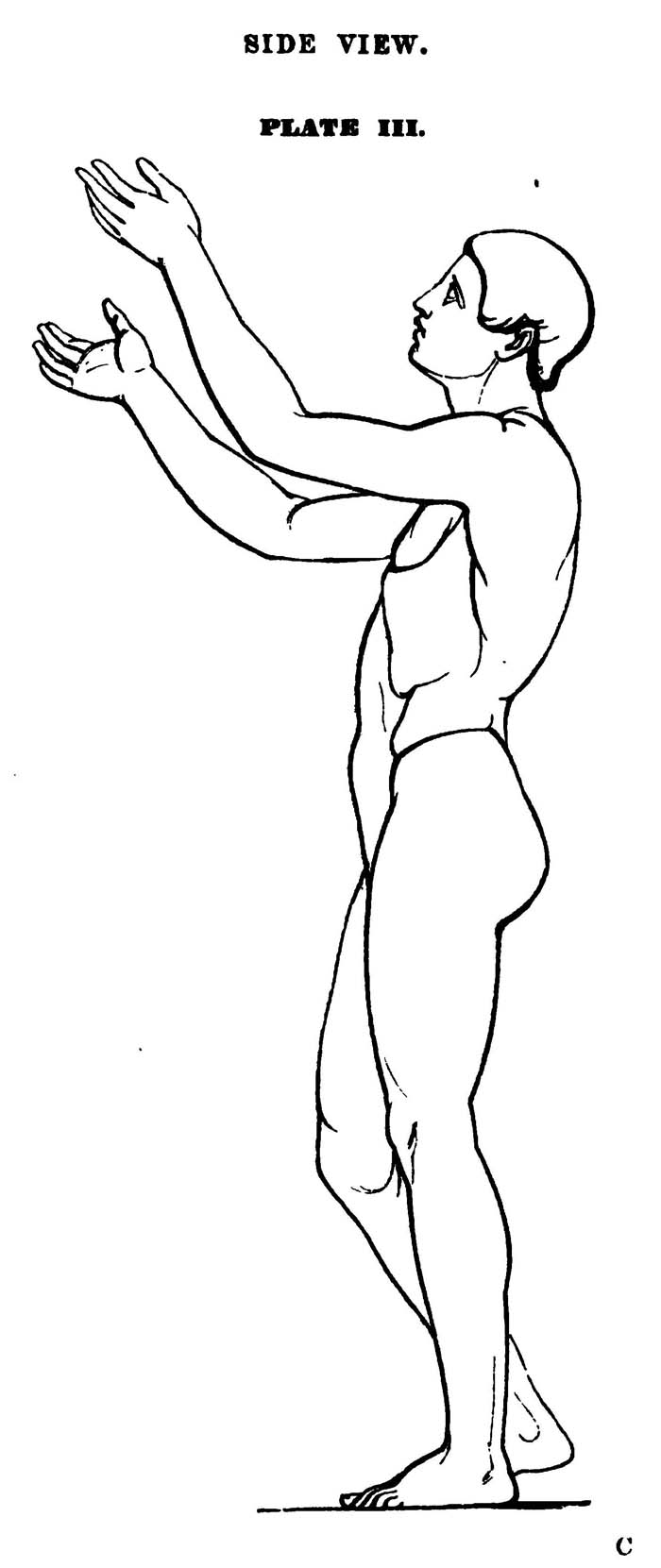
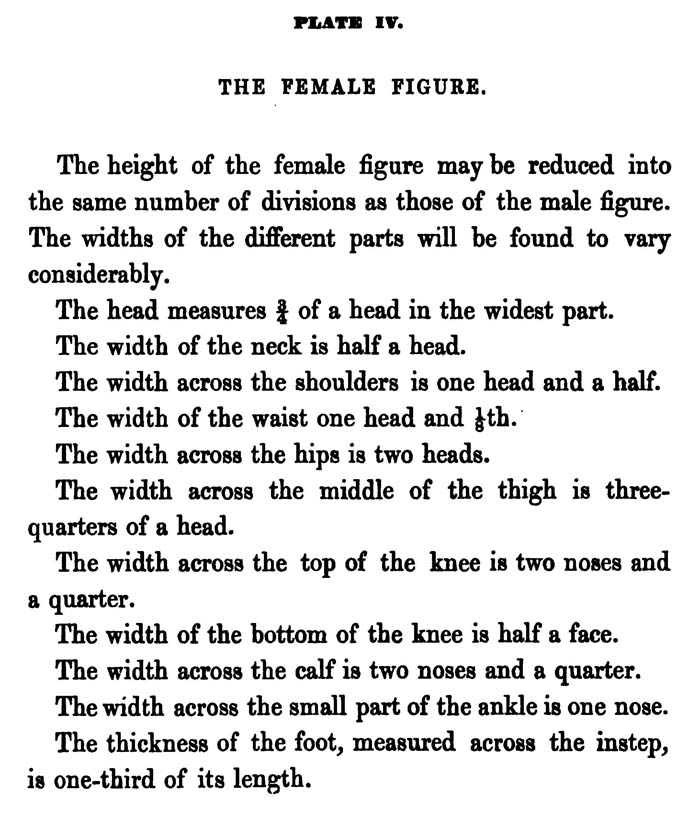
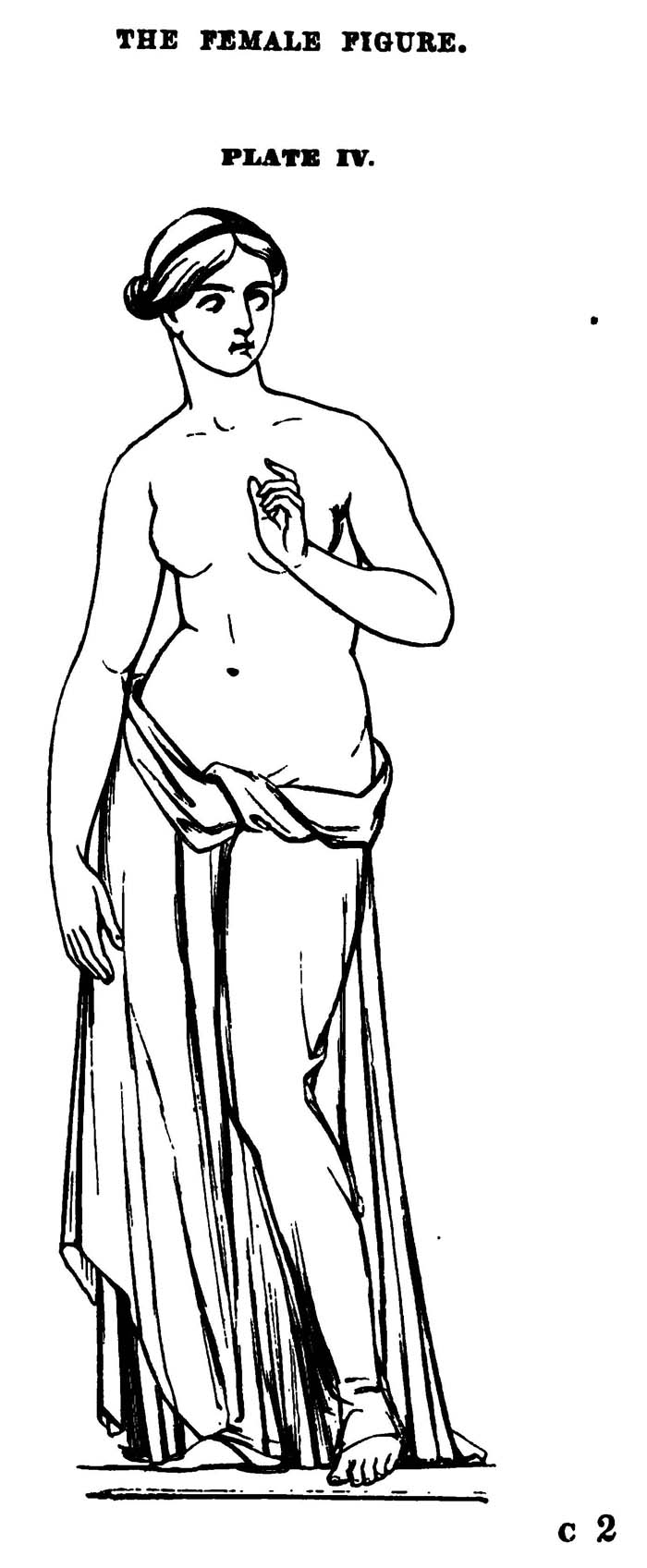
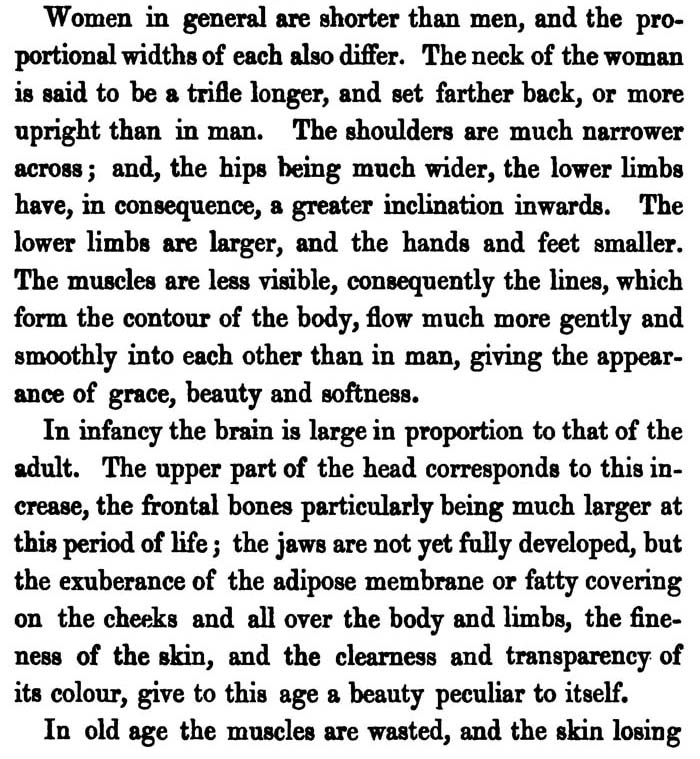
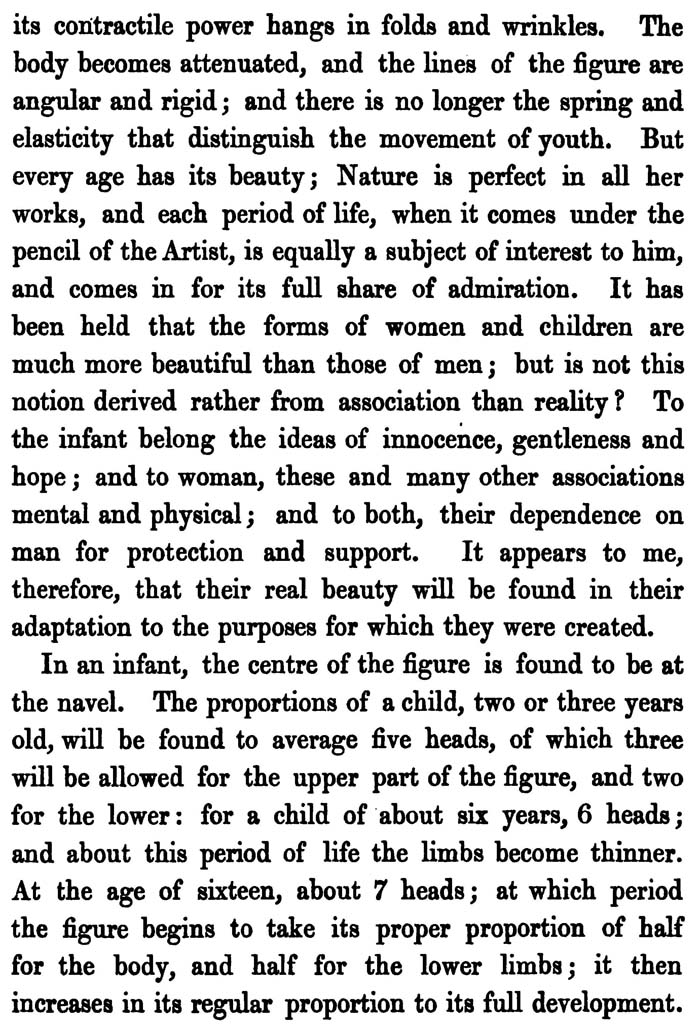
DRAWING THE PROPORTIONS OF THE HUMAN BODY.
When we consider the variation to which the human form is subject in different parts of the globe, it seems difficult, at first, to find the standard in which beauty consists. The consent of ages has been given to that established by the Greeks, and found in those works of that great people which remain to us.
In them we find all that can realize the idea of beauty to our minds, the symmetry of the whole, and the fitness and the adaptation of the parts being that from which nothing can be taken away, and to which nothing can be added; this standard seems indeed to be a test of truth in all matters of Art relating to the beau-ideal of human form. We have, however, not always to represent the perfection of form ; and it is quite evident that no rule can be given that will answer to the countless varieties, national or individual, that come before our daily experience ; but as all these are departures from the acknowledged standard, a knowledge of that first obtained would enable us the more readily to detect them, and see wherein the difference lies. The short and squat figure of the Laplander, or the tall and muscular figure of the Caffre or Patagonian, could, by a reference to rule, be satisfactorily given on paper, by the number of heads or spaces the figure was divided into, according to the scale to be found in this work.
The physiognomical distinction between nations is also easily observable, so that we could tell at a glance the Arab from the Chinese, or the Negro from the European, and refer these differences to the given standard. The small eyes obliquely set in the head, the raised eyebrows, and the broad flat nose, would enable us to mark the Chinese; and the retiring forehead, the skull rising behind, the projecting jaws, flat nose, large nostrils, and the ears placed high up on the head, would point out the Negro : and our appreciation of the peculiarities of each, or of any other, would be obtained by the reference we insensibly make to the standard upon which our taste has been formed.
It requires, however, a nicer shade of discernment to ascertain wherein the difference lies in the physiognomy of individuals of the same nation, or of those with whom we mix in our daily intercourse; but to the Artist accustomed to observe and to note any deviation from the principle of proportion, the angle formed with the eyes and mouth, a little more acute or obtuse, the chin advancing or retiring, the high or low forehead, give at once an idea of individuality by these variations, or departures from the standard of proportion.
From the analysis and measurement of the finest Greek statues, it is to be gathered that if the grand or heroic was intended to be represented, the figure exceeded 8 heads ; and if the graceful and youthful were the subject, the proportion was less than 8 heads and more than 71 : the average seems therefore to be between these measures. Leaving out all the more minute fractional divisions into which the human figure has been resolved, I shall commence by dividing it into 8 heads, as the most simple rule, and one that seems to comprise the essentials of all others that have been given. This will divide the figure thus :
Heads.
From the crown of the head to the bottom of the chin . . 1
From the bottom of the chin to the top of the sternum, or breast bone . . . . . . . 1/2
From the top of the sternum to the bottom . . 1/2
From the bottom of the sternum to just above the navel . . . 1
From just above the navel to the commencement of the lower limbs . . . . . . . 1
From the commencement of the lower limbs to the middle of the thigh . . . . . . 1
From the middle of the thigh to the bottom of the knee . . . 1
From the bottom of the knee to the small of the ankle . . . . . . . . 1 1/2
From the small of the ankle to the sole of the foot ... 1/2
Heads . 8
LENGTH OF THE ARM.
Heads.
From the top of the shoulder to opposite the armpits ...1/2
From thence to the elbow joint . . 1
From the elbow joint to the wrist . . 1 1/4
From the wrist to the end of the longest finger ... 3/4
The arms banging down by the side, and having the fingers extended, would reach to the middle of the thigh.
If the arms were extended at right angles with the body, the width across, from the tip of the longest finger of the one hand, to the tip of the longest finger of the other, would be equal to the length of the figure, or 8 heads.
The width of the neck across is half a head.
The width to the setting on of the shoulders, is one head and a half.
The width across the shoulders is two heads ; this will also form an equilateral triangle with the navel.
Under the arm-pits it is one head and a half.
Across the waist one head and a quarter.
The width of the top of the thigh is three-quarters of a head;
And that of the top of the knee is half a head. That of the bottom of the knee is also half a head.
Across the calf is two noses and a half, or I of a head. Across the small of the ankle is one nose, or 4 of a head.
The hand is of a head in length, and the length of the middle finger is equal to half the hand.
The Ancients allow one-sixth of the whole length of the figure for the length of the foot, rather less than more. This scale of proportion would answer for a fine model six feet in height ; therefore all more than 8 heads would increase the appearance of tallness, and all below that proportion would tend to give the appearance of shortness.
BACK VIEW OF THE FIGURE-WIDTH.
Heads.
Across the widest part of the head above the ears 3/4
Across the neck . . . . . .1/2
Across the setting on of the shoulders . . 1 1/2
Across the shoulders . . 2
Across the waist .1 1/4
Across the hips .1 1/2
Across the middle of the thigh 3/4
Across the top of the knee . 1/2
Across the bottom of the knee .. 1/2
Across the small of the ankle one nose, or 1/4
THE FEMALE FIGURE.
The height of the female figure may be reduced into the same number of divisions as those of the male figure. The widths of the different parts will be found to vary considerably.
The head measures of a head in the widest part. The width of the neck is half a head.
The width across the shoulders is one head and a half. The width of the waist one head and ith.
The width across the hips is two heads.
The width across the middle of the thigh is three-quarters of a head.
The width across the top of the knee is two noses and a quarter.
The width of the bottom of the knee is half a face. The width across the calf is two noses and a quarter.
The width across the small part of the ankle is one nose. The thickness of the foot, measured across the instep,
is one-third of its length.
Women in general are shorter than men, and the proportional widths of each also differ. The neck of the woman is said to be a trifle longer, and set farther back, or more upright than in man. The shoulders are much narrower across ; and, the hips being much wider, the lower limbs have, in consequence, a greater inclination inwards. The lower limbs are larger, and the hands and feet smaller. The muscles are less visible, consequently the lines, which form the contour of the body, flow much more gently and smoothly into each other than in man, giving the appearance of grace, beauty and softness.
In infancy the brain is large in proportion to that of the adult. The upper part of the head corresponds to this increase, the frontal bones particularly being much larger at this period of life; the jaws are not yet fully developed, but the exuberance of the adipose membrane or fatty covering on the cheeks and all over the body and limbs, the fineness of the skin, and the clearness and transparency of its colour, give to this age a beauty peculiar to itself.
In old age the muscles are wasted, and the skin losing its contractile power hangs in folds and wrinkles. The body becomes attenuated, and the lines of the figure are angular and rigid; and there is no longer the spring and elasticity that distinguish the movement of youth. But every age has its beauty; Nature is perfect in all her works, and each period of life, when it comes under the pencil of the Artist, is equally a subject of interest to him, and comes in for its full share of admiration. It has been held that the forms of women and children are much more beautiful than those of men; but is not this notion derived rather from association than reality ? To the infant belong the ideas of innocence, gentleness and hope ; and to woman, these and many other associations mental and physical; and to both, their dependence on man for protection and support. It appears to me, therefore, that their real beauty will be found in their adaptation to the purposes for which they were created.
In an infant, the center of the figure is found to be at the navel. The proportions of a child, two or three years old, will be found to average five heads, of which three will be allowed for the upper part of the figure, and two for the lower : for a child of about six years, 6 heads; and about this period of life the limbs become thinner. At the age of sixteen, about 7 heads; at which period the figure begins to take its proper proportion of half for the body, and half for the lower limbs ; it then increases in its regular proportion to its full development.




